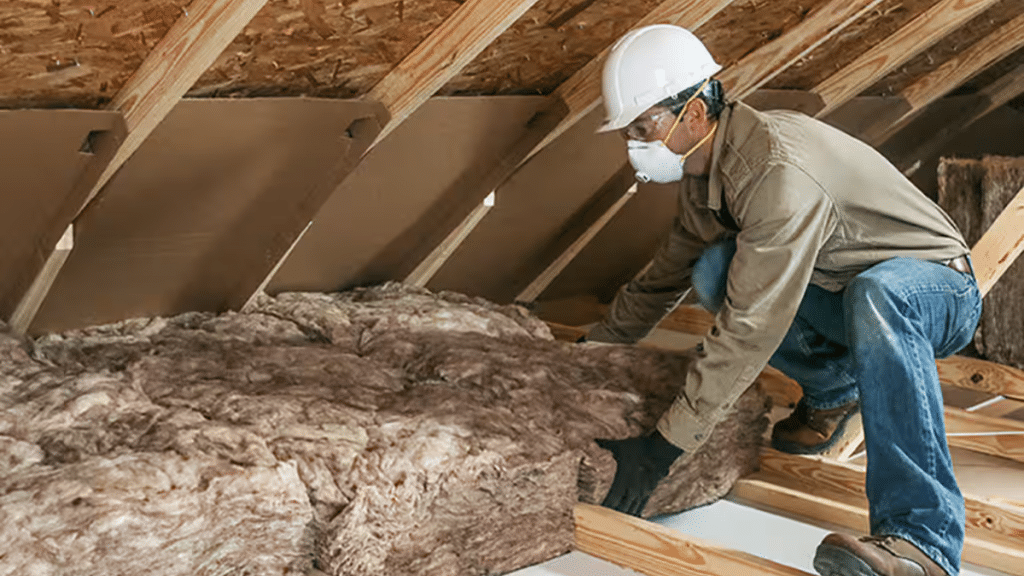Insulation isn’t something most people think about until something goes wrong. A draft appears, energy bills spike, or one room refuses to stay warm no matter what. Suddenly, what’s behind the walls or above the ceiling becomes very relevant. But full-home insulation isn’t always practical. Sometimes, insulating a specific area makes more sense, whether for budget reasons, structural limitations, or targeted comfort.
The idea sounds simple—just improve one section—but that decision opens the door to several important considerations.
Why Partial Insulation Might Be the Right Move
Not every house, renovation, or project requires insulating every inch. Sometimes it’s a converted loft that’s always too hot in summer. Other times it’s a garage ceiling beneath a bedroom that stays freezing in winter. For older homes, partial upgrades can be a practical way to deal with problem areas without overhauling the entire thermal envelope.
Then there’s the budget. Insulating only the most affected areas allows homeowners to spread out improvements over time. It can also be the only viable route in buildings where certain areas can’t be easily accessed or retrofitted.
But while the idea of doing “just the roof” or “only the attic” might sound efficient, the success of this approach depends heavily on the details—specifically the materials chosen and how they interact with the existing structure.
Choosing the Right Materials and Seeking Good Advice
When you insulate only a portion of a space, you’re asking that insulation to function somewhat independently. That means material choice, placement, and compatibility with the surrounding structure become even more important. Reflective insulation, for instance, often needs a specific installation setup to work properly. The wrong spacing or lack of airflow can compromise its performance entirely.
This is why it’s worth starting with professional installation advice for specific sections before grabbing materials and diving in. Some insulation types are more forgiving than others. Others need to be paired with vapour barriers, ventilation systems, or very specific positioning to avoid issues like trapped moisture or heat misdirection.
Working without that context risks turning a seemingly smart, focused upgrade into a fix that either doesn’t work well or creates a new problem somewhere else.
What Actually Changes When You Insulate Part of a Space
Insulation isn’t just about holding in heat. It’s about managing how a building interacts with its environment. Change one part of that equation, and the rest shifts too. Insulate a roof but leave the walls and floor untouched, and you might stop heat from escaping upward but still allow cold to seep in from the sides. The result? An oddly layered indoor climate that feels off, even if the numbers suggest improvement.
Also, temperature changes can cause unexpected airflow. A heavily insulated loft might trap warmth above while the floors below stay cool. Or a well-insulated garage ceiling might raise humidity if surrounding areas lack adequate airflow. These are not theoretical problems—they crop up regularly when insulation is applied without considering the building as a whole system.
Avoiding the Most Common Mistakes
One of the easiest ways to waste money on insulation is to treat it as a one-size-fits-all solution. Not every space benefits from the same material. Not every product works well in isolation. And not every issue can be solved with a quick patch.
Overlooking air sealing is another frequent mistake. Even the best insulation will underperform if air is escaping around it. Gaps in walls, ceilings, or floorboards can let warm air out and cold air in, which means your carefully installed insulation ends up doing only part of the job.
It’s also common to skip the step of understanding existing insulation. Before adding anything new, it’s worth checking what’s already there. In some cases, partial installs can clash with old materials and reduce overall effectiveness, especially if different products require different installation conditions.
Can Partial Insulation Actually Deliver Results?
Yes, but only when planned carefully. The goal should never be just to fill a space—it should be to make the building function better. That might mean insulating one room to create a warmer office, reducing heat loss through a specific roof, or making a previously unusable attic more comfortable. These are all valid reasons for a selective install.
However, results depend on how thoughtfully the project is approached. That includes taking airflow into account, verifying compatibility with current materials, and most importantly, managing expectations. Partial insulation can bring comfort and efficiency gains, but it won’t transform a poorly insulated building into a passive house.
In many cases, it’s part of a phased strategy. One upgrade now, another later. That’s completely fine, as long as each phase is based on solid advice and real building data—not just what seems easy in the moment.
Conclusion: Better to Plan Than Patch
Insulating a single section of a building is not a shortcut. It’s a targeted strategy that, when executed properly, can be just as effective as full-home insulation—provided the context is right. Success comes from understanding the interaction between materials, space, and environment.
Before picking up a roll of insulation, get informed. Whether it’s a roof, ceiling, or loft space, treat every project as part of a bigger picture. That mindset is what separates a short-term fix from a long-term upgrade.
